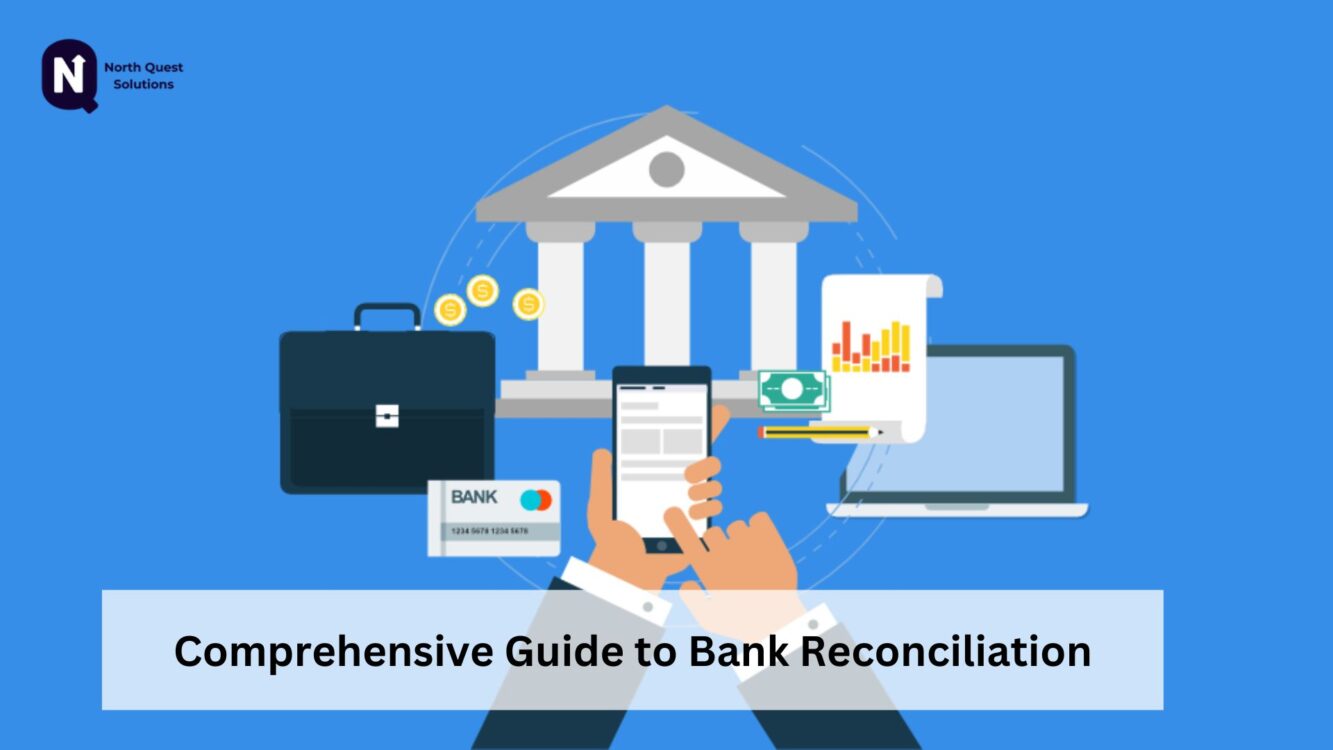Comprehensive Guide to Bank Reconciliation
Understanding Bank Reconciliation Bank reconciliation is an essential step in the accounting process that guarantees the reliability and consistency in financial data. Through comparing internal financial records and the bank statements, businesses can spot any discrepancies and rectify the errors promptly. The Importance of Bank Reconciliation Regular bank reconciliation helps businesses in multiple ways: The detection of fraud When looking at internal documents against bank statements, irregularities are identified that could indicate fraud. Afcurate financial reporting The process of ensuring that financial records are in line with bank statements will result in more accurate financial reports vital for the stakeholders as well as regulatory compliance. Control of Cash Flow Reconciliation aids in understanding the real cash flow and assists to improve financial management and planning. error identification Human errors in recording transactions are detected and corrected in the reconciliation process. Steps in the Bank Reconciliation Process 1. Gathering Necessary Documents To begin the reconciliation process, you’ll need: Bank statements for this time period. Internal accounts, for example the ledger or cash book. 2. Comparing Transactions Check each transaction in the internal record with the transactions in the statement of your bank. This includes withdrawals, deposits and other financial transactions. 3. Identifying Discrepancies Check for discrepancies between 2 sets of data. Common discrepancies include: outstanding Checks Checks that have been issued however not cleared yet by the institution. deposits in transit deposits that are recorded in the internal records, but not yet included in your bank’s statement. Banking Errors Errors committed by the bank when recording transactions. Records Errors Errors that are made in internal records, like duplicate entries or inaccurate amounts. 4. Adjusting the Cash Book Make the necessary adjustments to the internal records in order to correct any inconsistencies. This may involve depositing check balances that are not paid or deposits that are in transit or correcting any errors in the recording. 5. Updating the Bank Statement In certain situations it is required to call the bank in order to correct any mistakes on the bank statement. Be sure that the adjustments are and are reflected in bank books. 6. Finalizing the Reconciliation After all adjustments have been made After all adjustments are made, the adjusted balances of the internal records as well as the bank statement will match. This is a sign that reconciliation is completed. Common Challenges in Bank Reconciliation Timing Differentialities The transactions that are recorded in internal records might not show up on the bank statement because of timing variations. Advanced Transactions Processing complicated transactions, like foreign exchange transactions, can be a challenge to your reconciliation procedure. High volume of transactions Companies with large volumes of transactions might be unable to reconcile accounts in a timely manner. Best Practices for Effective Bank Reconciliation regular reconciliation The practice of conducting bank reconciliation regularly, like monthly, aids in quickly identifying and rectifying the discrepancies. Automating Tools Utilizing accounting software and automation tools could make reconciliation easier and decrease the chance of mistakes. Detail Documentation Keep detailed records of all reconciliation and transaction actions for audit and reference reasons. Segregation of the responsibilities ensure that distinct individuals are responsible for reconciliation and transaction recording to limit the chance of errors and fraud. Conclusion Bank reconciliation is an important job to ensure the integrity and accuracy in financial statements. Through a methodical approach using the best practices and addressing common problems business owners can make sure their financial statements are correct and trustworthy. Regular reconciliations not only aid in ensuring accurate financial reporting, but also improves the detection of fraud and control of cash flow. For more information :- visit t North Quest Solution
Read More
